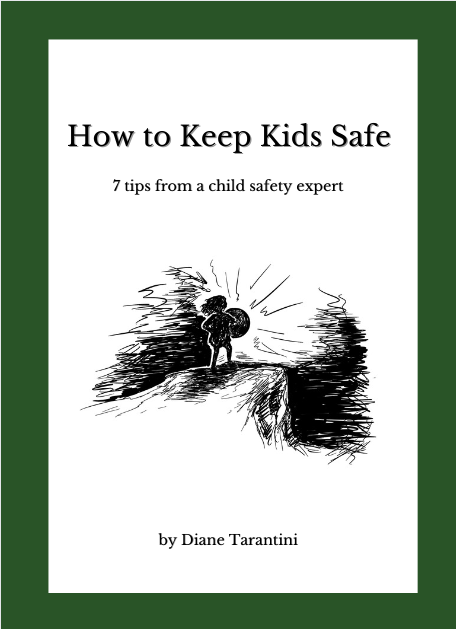Ever since I listened to this podcast episode, I’ve been a bit obsessed. About the current sextortion scheme—I blogged about it here—and kids watching pornography. The statistics on the topic are pretty crazy, so I decided to check out the report mentioned during the podcast episode. The very long report. Since not everyone has as much time on their hands as me, I thought I’d give you the Cliff Notes. In case you to want to know:
Exactly why are kids looking at pornography?
For starters, exposure to pornography is often accidental.
In fact, a few years back, that very thing happened to me. I misspelled a famous person’s name when typing it into Google, and whoa, I can’t unsee that! If it happens to an adult, surely it’ll happen to a child.
A child can also stumble across pornographic images if an adult in their household has been viewing it. “X” out of those websites, people. Clear the search history, too!
Sometimes a “precocious” child shows porn to their friends.
This happened to a friend when our sons were in fourth grade together. One afternoon she called me sounding pretty freaked out. “Do NOT let ___ come over for a playdate,” she said. “He’ll make a beeline for your computer with your kid, type in ‘boobs,’ and it’ll be all over!” Point noted!
On the other hand,
Some kids seek out pornography for a specific reason.
What reason? I wondered.
Imagine my surprise when I learned it wasn’t necessarily because they were obsessed with sex or addicted to the content, though some truly are.
Kids often visit pornography websites because they’re curious.
According to the Common Sense Media Report‘s introduction: “…as adolescents undergo the physical and social-emotional changes associated with puberty, they begin to explore their sexual development and often turn to the internet to learn about sexual behaviors.”
Want some specifics? Here are some of the things kids want to learn about:
- How to have sex
- What does the human body look like
- What types of sexual behaviors are likely to feel pleasurable to me
- What types of sexual behaviors are likely to NOT feel pleasurable to me
- What types of sexual behaviors are likely to feel pleasurable to a sexual partner
- What types of sexual behaviors are likely to NOT feel pleasurable to a sexual partner
While adults might think a pornography site is not the best place to learn how to have sex, a lot of kids think otherwise.
45% of teen pornography viewers agreed that “online porn gives helpful information about sex.”
I don’t know about you, but I don’t love the idea of kids using porn sites as sex education. But then I encountered this statement. More than once.
“If you won’t talk to your child about sex, the Internet will.”
Oh, man! Are kids turning to pornography for sex ed because adults are failing them in this area?
Looks like it. Most of the kids in the Common Sense Media report said they’d had conversations with adults about relationships, sex, and birth control; however, only half of those teens said the conversations included the subject of pornography.
The study went on to say, “…many teens indicated that they wish they could have conversations about their experiences with online pornography with a trusted adult, but either felt they did not know how to initiate that conversation (39%) or did not know who to turn to (34%).
I know it may seem counterintuitive, but:
If kids are looking for information about sex, let’s help them find it.
If we aren’t comfortable having a discussion about sex specifics with the kids we care about, let’s locate someone who is. Like Amy Lang of Birds & Bees & Kids. I’ve never met Amy in person, but I’ve been following her on Facebook for years, and she is 100% comfortable with talking to kids and grownups about all things related to sex. Her website includes resources, a podcast, a sex-ed blog, and more.
In addition to Amy,
Here are some great resources I’ve found related to children and pornography.
The website bark.us is a treasure trove of helpful resources. In addition to providing parental monitoring systems for devices and a monitored phone for kids to use, their blog has excellent articles on all kinds of topics. I think this one is super helpful: How to block Porn Hub and other porn sites.
The podcast episode I mentioned above with Nicole and Chris also discusses parental monitoring systems. And if you want a faith-based option, my friend, Ken Clouser, had a good experience with the Covenant Eyes app.
Clouser told me, “I can get alerts and weekly emails of concerning activities and screen shots from the kids’ cpu usage. A family plan is only $17/month. A worthwhile investment to keep the conversation lines open. I also think that just having the program (and knowing that I would get an email) kept our sons from going down too many dark paths. There even were times when they’d come to me first… ‘I clicked this link on this ad and it took to some porn site I wasn’t expecting.’ Or they’d tell their friends, ‘Don’t even jokingly search for that stuff on my phone, or I’ll hear about it from my dad.’”
Pro-Tip: Chris McKenna of Protect Young Eyes recommends getting parental controls on all devices before your first child starts looking at a screen.
Stay tuned next week for another post on this topic.










